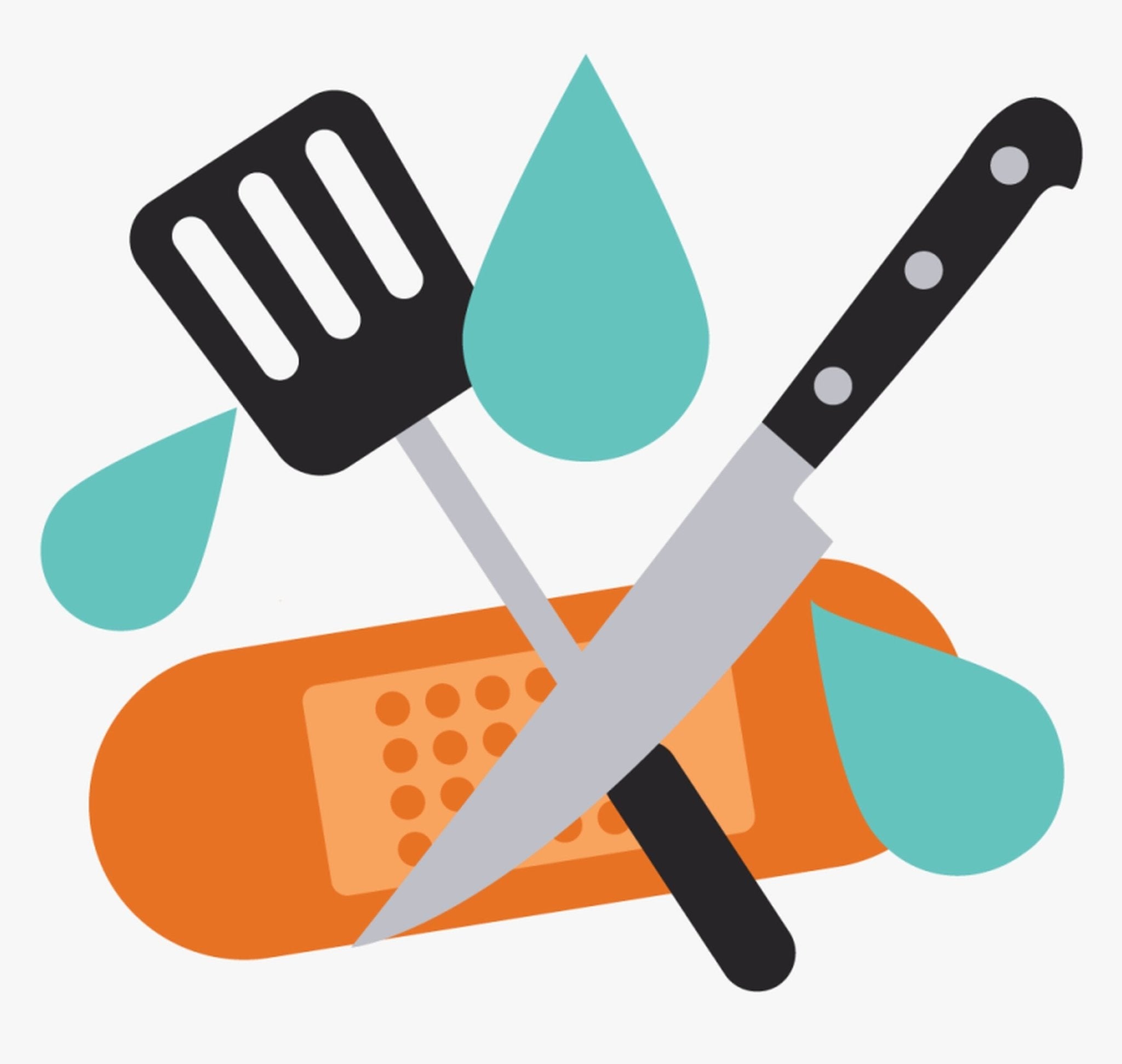Safety in the Kitchen: The Basics of Knife Safety

It would seem that the golden rule of owning any kind of knife is that a sharp knife is not only better than a dull knife, it is also safer. However, even if you follow this rule religiously there are still a lot of safety tips you need to follow in order to handle your knives effectively.
Knife Storage


A good first step in safely using your knives is to ensure that they are stored properly. It is never a good idea to keep your knives loose in a drawer. This can be especially dangerous if they are not sheathed as well.
The first way to store your knives is by keeping them in a nice knife block. You can easily store a knife block on your counter within arms reach of where you do most of your cooking. While you have the option of using the block that sometimes comes with a set of knives there are also custom-built blocks available. Either will safely store your knives.
Another great option is using a magnetic strip. These can be placed above your cooking station on the wall, which can free up any much-needed counter space. While your knives’ blades will be exposed on the magnetic strip this is still a safe storage option as you will be able to view every inch of your knife prior to choosing to use it.
If you do end up having to keep your knives in a drawer in addition to covering the blades with a sheath you will also want to get an in-drawer organizer. You will just want to be sure whatever drawer knife organizer you get fits any size knives you may own. There are those that are built for certain brands as well as customizable options if you own a mixture of knives.
Walking With Your Knife

It is always a good idea to store your knives near your work area so you don’t have too much movement between retrieving your knife to using it. However, if you have to walk from point A to point B with your knife, you will want to make sure you walk with your knife safely.
To walk across your kitchen with a knife you will want to have the blade tip pointing down towards the floor with the sharp edge of the blade facing behind you.
Use a Cutting Board

I know it may seem fairly obvious, but there are those that skip this important safety measure in their kitchen. When cutting anything with a knife you will want to do so on a nice strong and stable surface.
The preferred types of cutting boards are those made of plastic or wood and are, of course, knife-friendly. Cutting on uneven surfaces or those that are not meant to handle knives pose a danger to those surfaces by subjecting them to cuts and scratches that cannot be easily fixed. You also bring danger to yourself with the very real possibility of your blade slipping and cutting you.
Additionally, you never want to cut any food free-hand over the sink. This method is potentially more dangerous than simply cutting your food on an improper surface. If your kitchen doesn’t have the counter space to cut your food, then you will need to make the space or hold off on cutting until you have found a suitable surface to work on.
The bottom line, if you don’t own a cutting board yet, buy one and once you own it, use it.
Safely Cut Foods

Once you have your cutting board set and your knife ready to use, it is time to bring out the food you plan on slicing, dicing, or chopping. Remember, there is no rush when you are cutting anything in your kitchen. It is always best to simply take your time and enjoy the movement of the blade cutting into a fruit or vegetable.
Speaking of which, when you cut a fruit or vegetable you will want to cut them in such a way that there is always a flat side on the cutting board. Doing this simple step with your fruits or vegetables provides a stability to your cutting. Thus, making it easier and safer to cut the foods.
Another important tip while cutting your food is to make sure you are always cutting away from you. In the event that the knife slips you will want it to do in the direction away from your hand. An added measure is to turn the guiding hand into a claw, keeping the thumb and fingers tucked under as you hold the food you are cutting. This way even if the knife does happen to slip you are in a better position to avoid any injuries.
Cleaning Your Knife After Use

Never lick your knife after you have finished cutting your food! This may seem like something everyone should know, but the temptation will be there and to keep yourself safe it is best to ignore it. Even just licking a butter knife can lead to potential injury. Just don’t do this.
Once you have finished cutting all the food you need you will want to clean the blade of your knife. Cleaning your knife won’t be the same as cleaning any other utensil as you won’t want to just place it in your sink full of water. This causes the blade to rust and thereby dull quicker.
For this reason, it is probably a good habit to wash them last. When washing your knife do so with the blade facing away from you. Take care that you make sure your hand stays a safe distance from the blade’s edge or that you have something in between to prevent unnecessary injury.
After your knives have been properly washed you will want to dry them. Make sure they are one hundred percent dry before returning them to their storage. Any moisture trapped in with the knife can again cause rust build-up and dull your knife.
Other Safety Tips

When working in a kitchen with many people like in a restaurant, for example, you may find that you will need to share your knife with multiple people. And while it may be quicker to just hand the knife off to the next person who needs it, it is not the safest method.
If someone else needs to use your knife you will want to lay it down on the cutting board and have them pick it up by the handle. This way the handle is the only part of the knife being touched by either party and the blade is kept away from anyone preventing accidental injuries.
Another way to prevent accidental injuries is to not reflexively reach for a falling knife. If a knife is ever dropped in the kitchen it is best to just let the knife fall. Bringing yourself closer to the falling knife and then reaching out a hand to an uncontrolled blade can lead to serious injury.
We hate to see a favorite knife clatter to the ground and then having to take the time to clean the blade, but it is far better than the alternative.
The best strategy for implementing all of these knife safety habits is to go slow, practice, and follow any and all safety guidelines that are recommended. If you do, you will find that using a knife can be easy, fun, and safe.
1 comment



N/A